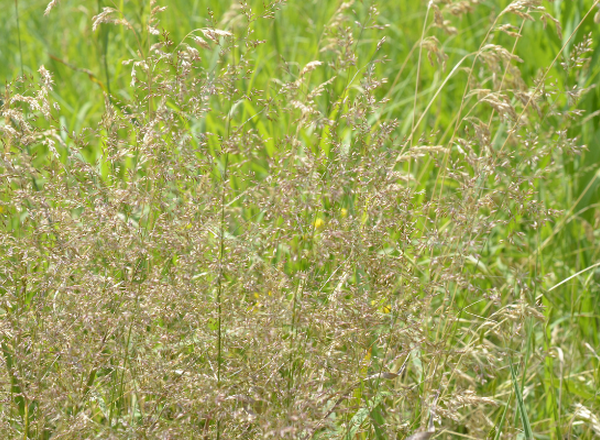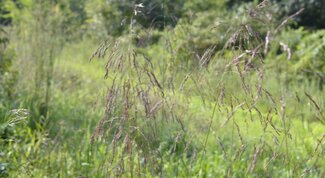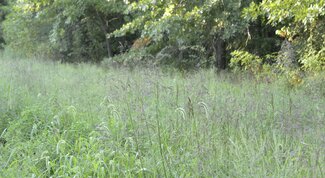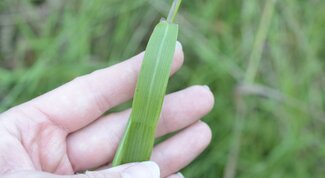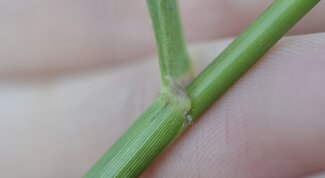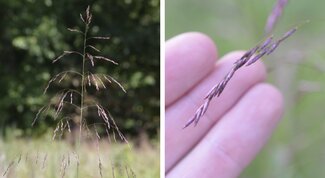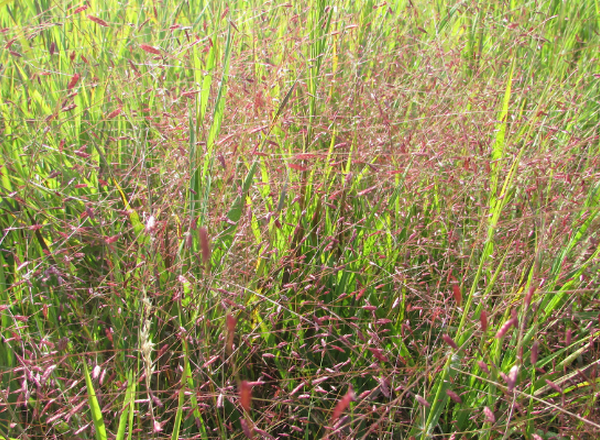Purpletop's name matches its look.
You may recognize Purpletop by its other common names: Grease Grass. Why is it called that? And how can you identify it? Let's find out.
Range and habitat
Found in all but the northernmost counties of Illinois, Purpletop is a relatively common grass. It is a native species, but you’ll often find it in disturbed areas, such as fields and roadsides. It can be found in savannas and woodland borders, as well. It can be used as livestock forage or cover for wildlife.
Vegetative characteristics
Purpletop usually grows 3 to 5 feet tall. As a warm-season grass, it will put on much of its height and flower in the heat of summer. Its stems are smooth and leaves are broad. You can find hairs on the outside of the leaf sheath in the collar region, right where the leaf blade becomes the sheath.
Purpletop’s purple top
This grass becomes infinitely simpler to identify if you find it in flower. The inflorescence is a panicle, with open airy branches that droop at their tips (left and right). The spikelets are purple in color and held on branches.
Need help to identify? Run your hand from the stem up through the inflorescence. This grass produces an oil that rubs off when touched; thus it'd popular name Grease Grass!
